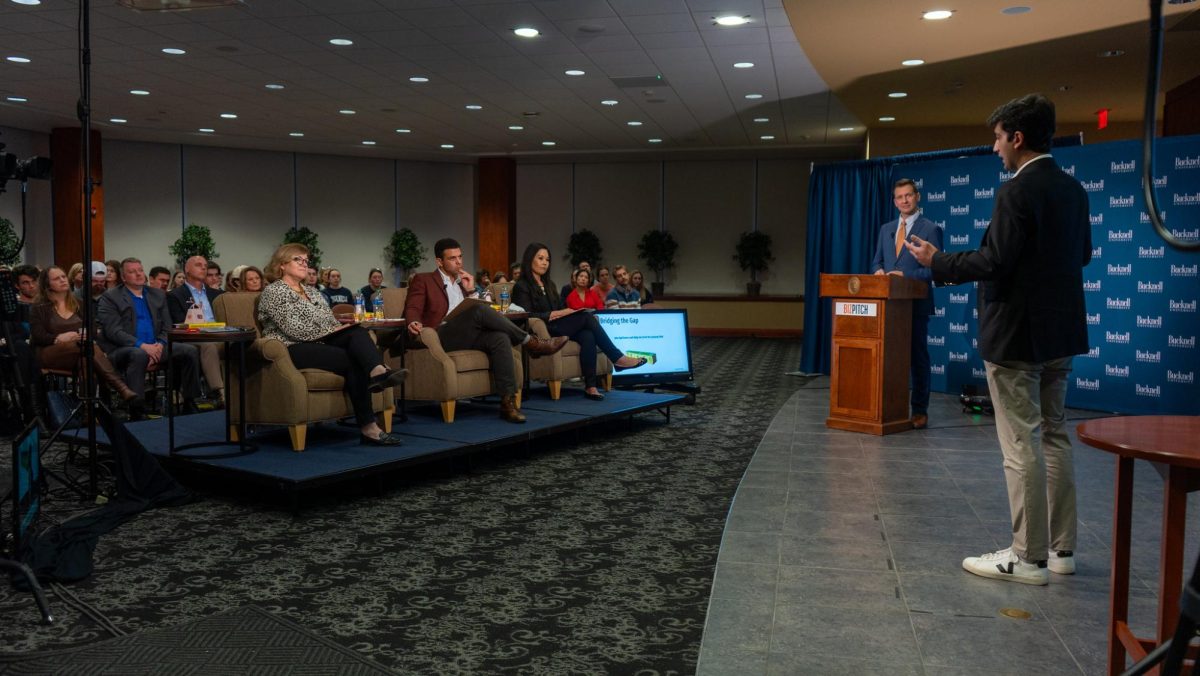New greenhouse dome added to University’s “Energy Hill”
November 10, 2016
In a joint effort with the Bucknell Center for Sustainability and the Environment (BCSE), students and faculty are actively building and utilizing a new greenhouse dome. The dome is located in close proximity to the South Campus Apartments and comprises part of a larger area dubbed “Energy Hill” that includes a 900-watt wind turbine and a nine-kilowatt array of solar panels. The structure’s design will allow for a sustainable and efficient use of resources and energy.
The students and faculty affiliated with “Energy Hill” just recently finished the exterior of the greenhouse that will allow for the enclosure of warm air inside the dome, a necessity for the coming months.
Assistant Professor of Mechanical Engineering Nathan Siegel, Associate Professor of Electrical Engineering Peter Jansson, and Professor of Civil and Environmental Engineering Thomas DiStefano have been working with students to design sustainable energy systems for the greenhouse.
“I think that the greenhouse, and the wind and solar power equipment sited nearby, are important because they are very visible examples of ways in which we can more effectively use the resources that we have available to us,” Siegel said.
Mechanical engineering major, Daniel Dudt ’17 added, “Engineering classes are designing heating and irrigation systems to control the climate inside of the dome, and it is rewarding to know that these projects will actually be implemented on campus” and lauded how the “success with this greenhouse proves the feasibility of building more sustainable structures on campus in the future.”
The dome’s completion is projected for late spring 2017 at the earliest. The faculty and student team has been meeting regularly to plan and carry out behind-the-scenes work. Siegel noted that at this point, there are only a few tasks remaining for completion before they can put plants in the greenhouse. One major ongoing task is the development of a system that collects rainwater for the greenhouse. This system will grant usage of surrounding runoff water rather than from other sources. The team is also working on designing energy systems for heating and lighting.
“The greenhouse is important to the Bucknell community because it provides a site and a context for hands-on experimentation with sustainable design, research, and teaching,” Director of the Sustainable Design Program Dina El-Mogazi said.
El-Mogazi also noted that the concept of this sustainable greenhouse is closely connected to the Living Building Challenge, a building certification program that promotes clean and sustainable usage of nature’s resources.
Many are excited at the prospect of the greenhouse becoming a symbol for sustainability research and as a place where students across multiple disciplines can go to apply their coursework to real-world situations.
Dudt applauded this effort and stated, “It is my hope that the greenhouse becomes a place where different people from around the Bucknell community come together. Some may be interested in the renewable energy powering the structure, while others may be more invested in growing plants for food or research, but they will all come together under this dome that represents the future of sustainability.”
Spiegel affirmed that “Energy Hill” will be the site for future projects that will allow students to gain experience with sustainability research, which he predicts will become increasingly important in coming years.























